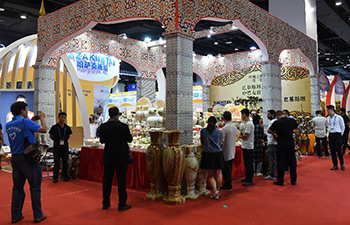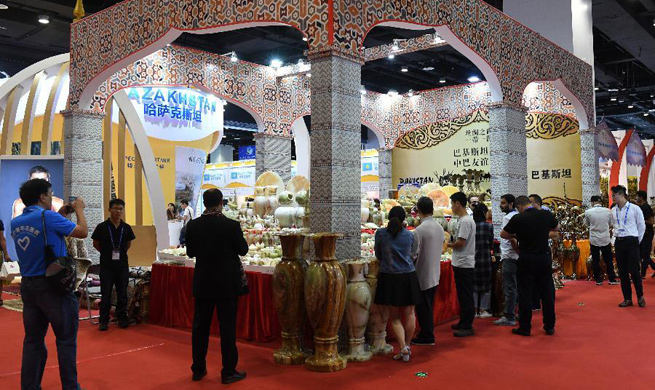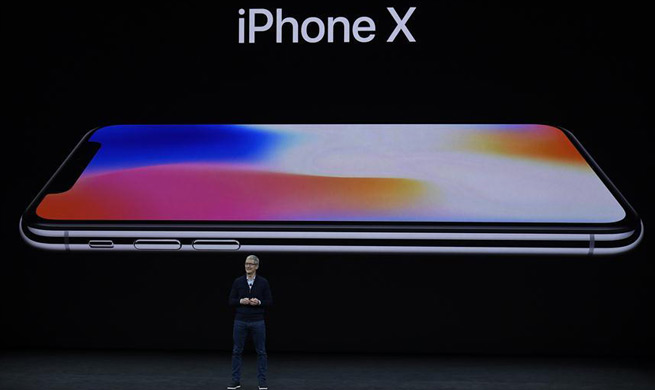SAN FRANCISCO, Sept. 12 (Xinhua) -- When the iPhone was known to the world as a new product from Apple Inc., "smartphone" was hardly the term for a class of electronic devices.
That was 10 years ago, at the same time when Steve Jobs, then chief executive officer (CEO) of the U.S. technology company headquartered in Cupertino, California, gave up its initial name as Apple Computer Inc.
For the previous 30 years, with Jobs as its co-founder, Apple had been the nameplate for personal computers.
With the launch of the iPhone, on Jan. 9, 2007, by Jobs, who died four years later at age 56, Apple has since turned into a consumer electronics company.
On Tuesday, Sept. 12, at a special event at the Steve Jobs Theater in Apple Park, the company's new headquarters campus which will later house the offices of thousands of employees, Tim Cook, the current CEO who replaced Jobs, rolled out the iPhone 8 as its latest smartphone and the iPhone X, literally the iPhone 10, as "one more thing."
While the iPhone 8 was expected as a sequel, the iPhone X was anticipated as a special 10th anniversary edition.
With tens of millions of iPhones now in use worldwide, the gadget is likely the most successful mobile device, and one of the most successful products in the information age.
From the iPhone's very beginning, Apple has been a designer, a developer and a seller, rather than a manufacturer, of the phone. It has been markedly designed in California, and physically made in China.
Throughout the years, the success of the iPhone has been more about industrial design. Jobs has been recognized as entrepreneur, businessman, inventor and industrial designer.
Jobs told the Macworld 2007 convention that he was announcing "three revolutionary products," the first being a wide-screen iPod with touch controls, the second being a mobile phone, and the third being an Internet communications device. However, "these are not three separate devices; this is one device, and we are calling it iPhone."
About the touchscreen controls, Scott Forstall, who led Apple's iOS operating system software division under Jobs, recounted earlier this year that Jobs started Apple's tablet computer project, which later turned out the iPad, because he personally did not like an acquaintance with Microsoft Corporation, which was developing technology of the kind; and did not like Microsoft's technology that relied on resistive touch and required a pen, or a stylus, to control.
"You don't use a stylus ... we're born with ten styluses," Jobs was quoted as saying. The solution was capacitive touch display, now a commonplace from smartphones to personal computers.
Later, according to Forstall, Jobs tasked engineers with shrinking Apple's tablet prototype down to "something small enough to fit in your pocket" when he decided that the company should make a smartphone.
It is a typical industrial design story. In the past 10 years, the iPhone might not be the first to adopt certain technologies, but it has been often packing new hardware and new features into the device in a different way.
In addition, it might not be only hardware components that have made a difference. Its iOS and software applications, or apps, more than 2.2 million of them as of early this year, have created a so-called eco-system for its operation.
Recent versions of the iPhone have had faster central processing units, or CPUs, as their power engines; faster graphics processing units, or GPUs, as accelerators of image displays; larger screens, which follow products from Apple's competitors; and better cameras, which result in better pictures, but how it will evolve in the future is still up to guess work outside the company.
Incidentally, Jobs announced the first iPhone at Moscone Center in downtown San Francisco 10 years ago. The day Cook rolled out iPhone X Tuesday, the inaugural Mobile World Congress Americas opened at the same center. Apple was apparently absent.

















